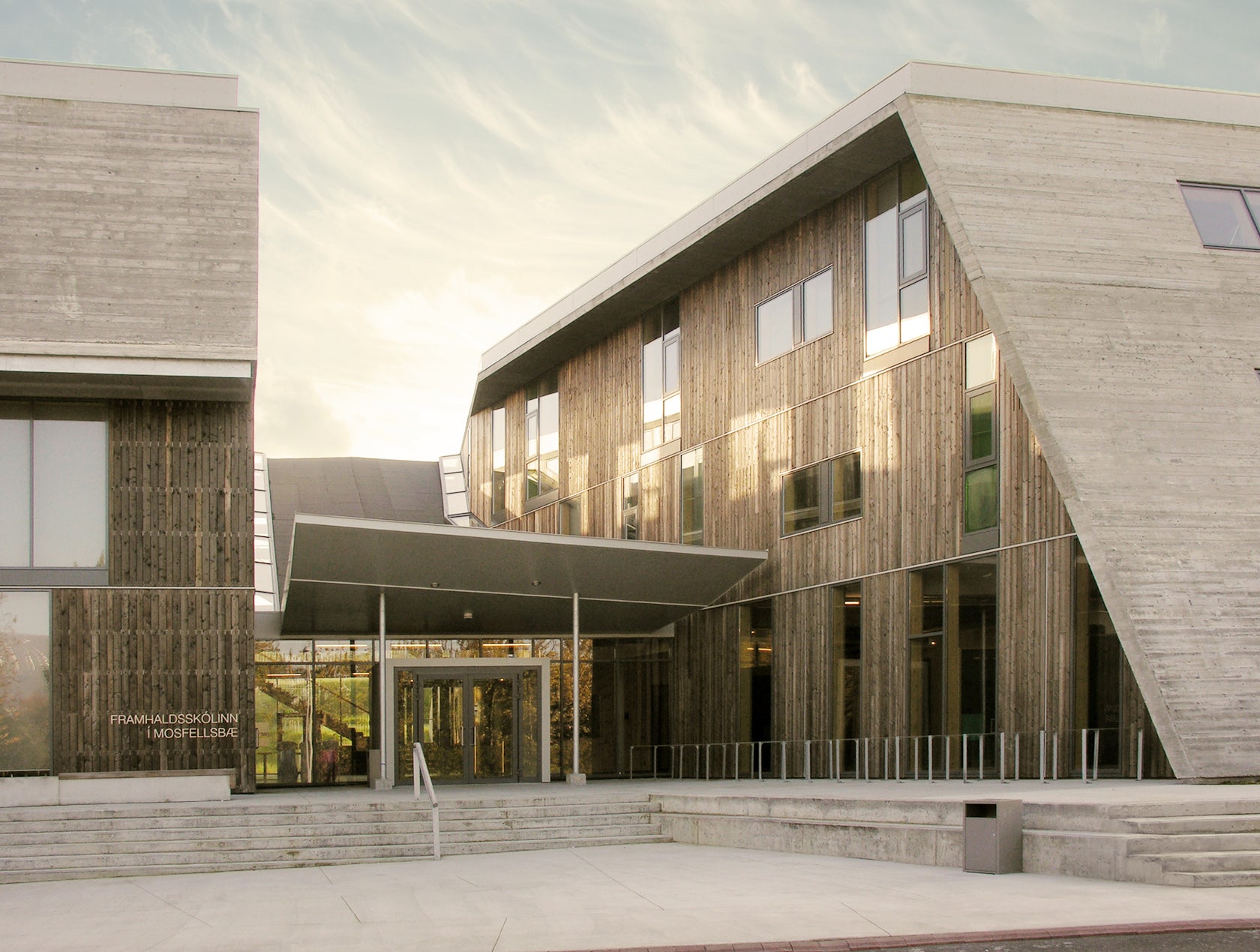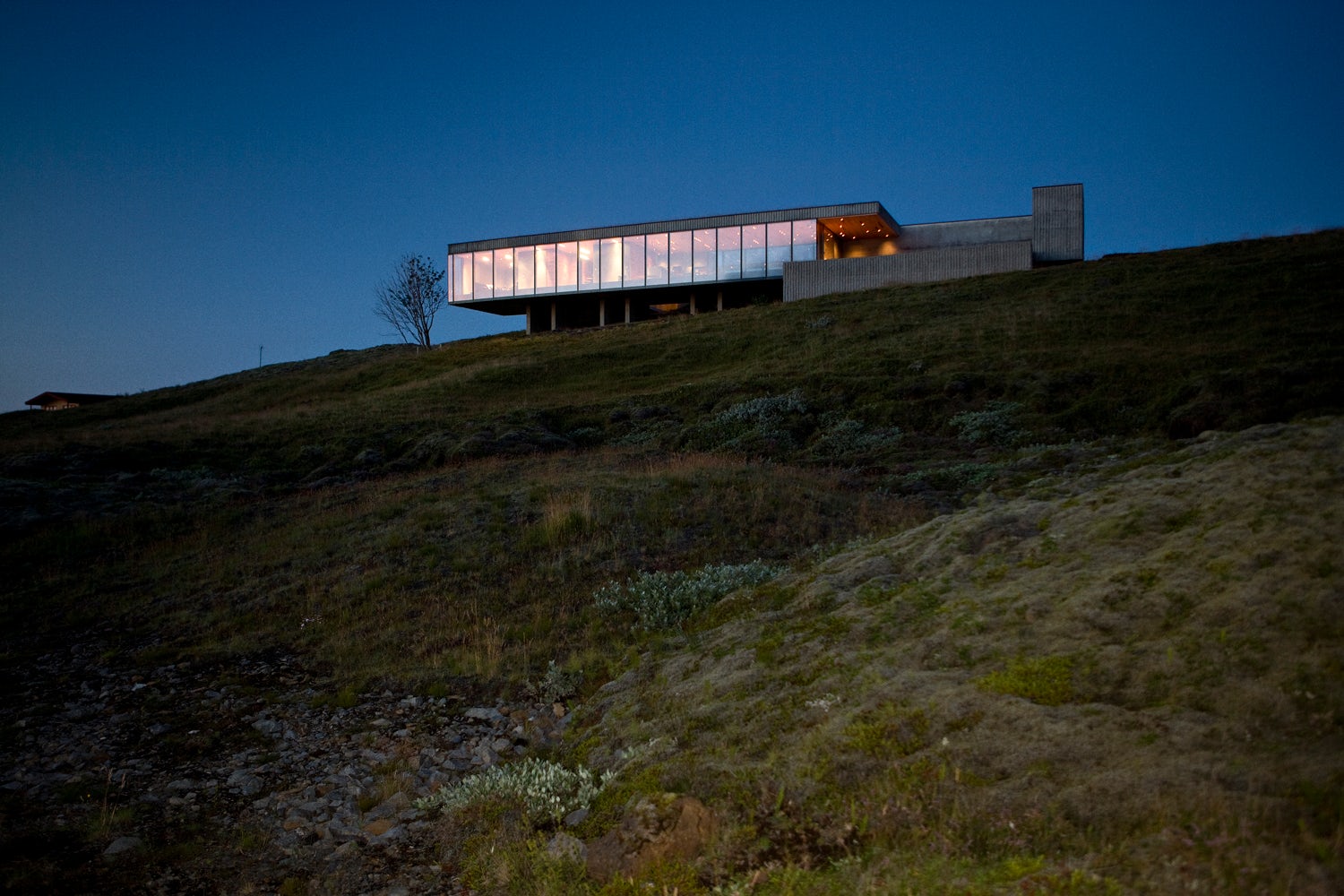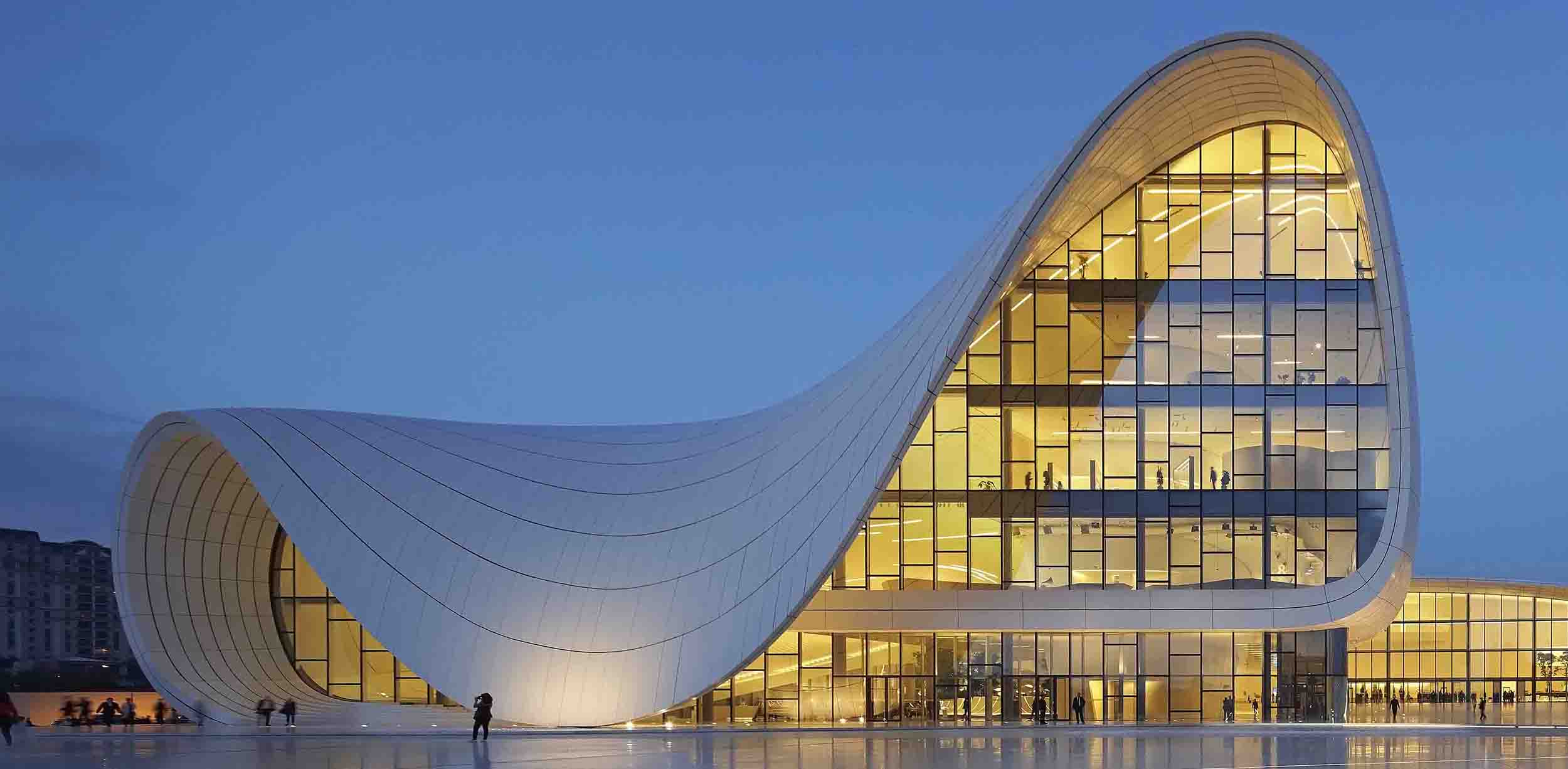Few places on Earth are as beautiful and remote as Iceland. The country’s architecture is equally unique, both formally and spatially, but also in terms of the context and communities from which buildings emerge. Both contemporary and pragmatic, the following projects stemmed from careful problem solving and thoughtful response to extreme environmental conditions. This gives each design a distinctive character, one rooted in time and place. Many Icelandic works prioritize view, landscape, and practical functionality. Each project gives insight into the ways by which the Icelandic people live their day to day lives, and these incredible destinations help further the understanding of the country for visitors.
Each building exemplifies different conceptual and formal techniques across diverse firms, varying programs, and contrasting scales. While there are both public and private projects, they all share a common investigation into the environmental, social, and contextual conditions of creating structures in Iceland. The projects represent a critical engagement with landscape that reinterprets past traditions and organizational methods, carefully examining material, spatial, and programmatic practices to reimagine them. Prepare to take a walk on the wild side …

© Henning Larsen, Batteriid Archtects

© Henning Larsen, Batteriid Archtects
Harpa – Reykjavik Concert Hall and Conference Center by Batteriid Archtects and Henning Larsen Architects, Reykjavik, Iceland
Reykjavik’s new concert hall was designed as a sculpture reflecting both sky and harbor space. Conceptually, the hall was inspired by the northern lights and the dramatic Icelandic landscape. The unique façade was created through a collaboration between multiple architects, artists, and engineers. This envelope stands in stark contrast to the massive, rock-like inner halls.


© minarc
Ion Luxury Adventure Hotel by Minarc, Selfoss, Iceland
This adventure hotel was created for visitors coming to experience the island “where fire meets ice.” The structure rests on the slopes of Mt. Hengill, a scenic destination near Thingvellir National park. Ion is also surrounded by hot springs which provide geothermal water and energy.

© minarc

© minarc
Ice House was constructed as a serene sanctuary connecting inhabitants with the surrounding environment. The residence combines sustainable materials and a minimalist architectural style, as well as energy-efficient technology. The architecture was designed to maximize solar power and cross ventilation, while conscientious material selection highlights the natural context.

© ARKÍS Arkitektar

© ARKÍS Arkitektar
Icelandic Institute of Natural Historyby ARKÍS Arkitektar, Gardabaer, Iceland
This research facility is both a public institution and private laboratory to study and monitor nature. Various departments are represented programmatically, including zoology, ecology, geology, and botany. The institute was designed as part of the comprehensive Urridaholt master plan, a development proposal prioritizing diversity and respect for community and environment.

© A2F ARCHITECTS

© A2F ARCHITECTS
FMOS by A2F ARCHITECTS, Mosfellsbær, Iceland
A new secondary school in Mosfellsbær, FMOS was created to house 500 students. Conceptually, the building was designed as part of the nearby landscape and connects both a public plaza and schoolyard. Programmatically, the school includes a library, canteen, admin spaces, multi-purpose room, and classrooms. Spaces are also designed to accommodate varied use, like the central entrance which doubles as a performance or event area.

© PK Arkitektar

© PK Arkitektar
Árborgby PK Arkitektar, Selfoss, Iceland
Árborg is located two hours east of Reykjavik near the Hvita river. The house rests atop a moss-covered hill overlooking the glacier-formed river below. The simple, rectilinear design becomes a quiet, powerful statement in the pristine landscape.

© arkibúllan arkitektar

© arkibúllan arkitektar
Churchyard Offices and Staff Housing in Gufunes Cemetery by arkibúllan arkitektar, Reykjavik, Iceland
This building is the first in a planned complex for Reykjavik’s main cemetery. Planned additions include a church, chapel, and crematorium. The Churchyard design looks carefully at the site’s composition and the scale “between the stones,” creating a building that defines the entrance for future development.

© ARKÍS Arkitektar

© ARKÍS Arkitektar
Snæfellsstofa Visitor’s Center by ARKÍS Arkitektar, Iceland
The Snæfellsstofa Visitor Center creates connections to its immediate surroundings while simultaneously attracting indoor and outdoor activities. The three zones of the building can be used in different ways depending on the season. The form of the visitor center was inspired by glaciers that continuously carve new paths and retreat into the landscape.




